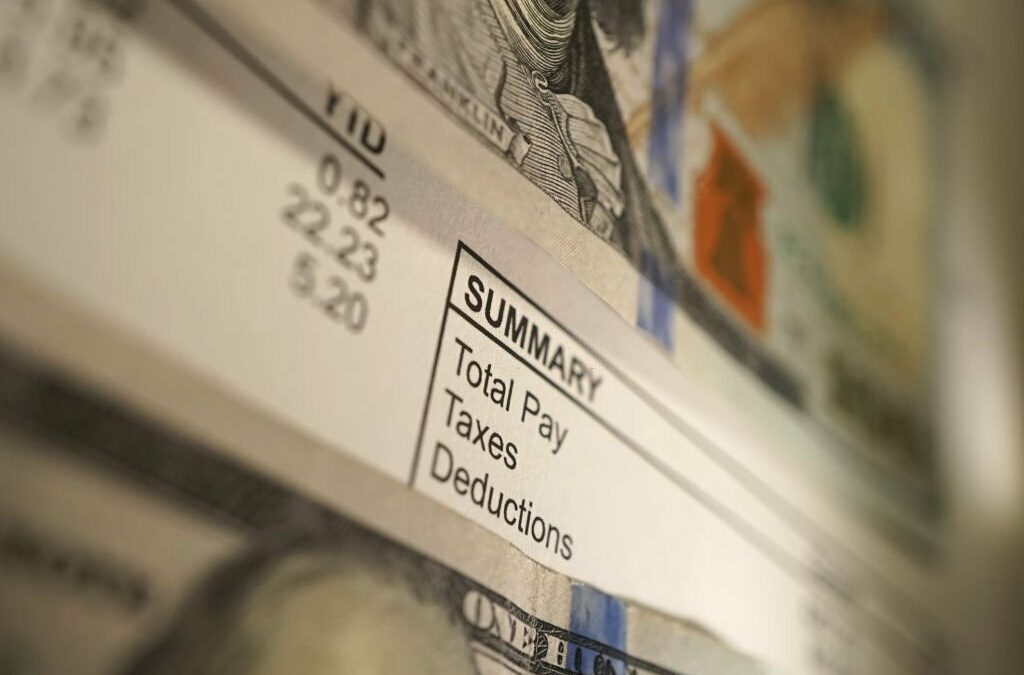When an employee parts ways with their employer, they might receive severance pay as a financial farewell gesture.
But why would a company send a pay stub for severance pay but no check? And why is it important to review your pay stub in this instance?
As per our expertise, a company might send a pay stub for severance benefits without a check if it occurred through direct deposit, which is typically detailed by your pay stub.
Additionally, a severance paycheck can be delayed in this instance due to unresolved issues between the employer and employee, or through standard processes related to tax withholdings or final audits.
In the upcoming article, we at Check Stub Maker will explore why a business might issue a severance pay stub without an accompanying check and highlight how our pay stub creator can assist.
We’ll also unpack state laws regarding severance payments, and explain how employers can properly issue final paychecks to dismissed employees.
What this article covers:
- Why Would There Be a Severance Pay Stub But No Check Received?
- What Is Severance Pay?
- Final Paycheck Laws By State
- How to Issue a Final Paycheck for a Terminated Employee
Why Would There Be a Severance Pay Stub But No Check Received?
There are several reasons why this could happen:
- Payment Options: Your employer may have done the transaction through direct deposit, and the physical check wasn’t issued—only the pay stub to detail the transaction.
- Errors In Payment Calculations: There might be a delay in receiving severance pay if there were initial inaccuracies in the final pay calculation, which still need to be resolved.
- Disputes Between Employer And Employee: If there are unresolved issues such as disputes over the severance agreement terms or finalizing necessary documentation, these could stall the physical issuance of your severance pay.
- Pending Processes: Awaiting the completion of necessary paperwork still pending such as the return of company property or signing of a non-disclosure agreement by the employee can also cause unforeseen delays with expediting the process of their severance payment.
If you encounter this situation, it’s best to check with your HR department or employer for specifics regarding the transactional method or any outstanding requirements needed on your end.
After trying out this product, our pay stub generator can assist you by accurately recording your final paycheck so you can approach your employer with the correct amount of what’s owed to you.
What Is Severance Pay?
Drawing from our experience, severance pay is intended to help former employees transition to new employment or adjust to their job loss with employers giving them financial support during this challenging period.
The Department Of Labor (DOL) notes that the specifics of severance pay, such as the amount and the conditions under which it’s paid, can vary significantly based on the:
- company’s policy
- terms outlined in work contracts
- duration of the employee’s service at the organization
When you create pay stubs with us at Check Stub Maker, we give you a detailed overview of your severance payment in your final documentation and how it relates to your gross pay and net pay.

Example Of Severance Pay
Through our practical knowledge, a typical severance package might offer anywhere from one week (for entry-level employees) up to a month’s worth of pay (for senior employees) for each year of service.
Here’s a basic formula for calculating severance pay and what severance pay could look like in actuality:
[Employee’s weekly salary] x [Number of weeks/Number of years] = Total severance allowance
Therefore, if a dismissed employee worked at a company for 5 years, earning $300 on a weekly basis and their employer wanted to pay them a month’s worth (4 weeks) of severance at the end of their employment, then they would be paid approximately $6000 in severance.
| $300 (employee’s weekly salary) x 4(5) [weekly pay schedule multiplied by years worked at company]
= $6,000 (severance payment) |
This package could also include additional benefits such as extended health insurance coverage, which serves to lessen the financial impact on the employee after their employment has ended.
These details, including eligibility and exact calculations for severance, are typically detailed in work agreements or professional policy documents.
Severance packages not only provide financial cushioning for the employee but also act as a goodwill gesture from the employer, potentially reducing the potential for legal disputes associated with terminations.

Final Paycheck Laws By State
Based on our observations, each state has its own set of regulations dictating when employees should receive their last paycheck after leaving a job. Failure to comply with these regulations can lead to legal repercussions.
For instance, in California, terminated employees are entitled to receive their final paycheck immediately, whereas in Florida, it must be provided within the next regular payday.
At Check Stub Maker, we regularly update our system to keep track of the latest legislation related to payroll so you always know your rights, especially when receiving severance from your employer.
Table: Final Paycheck Laws By State
| Termination Pay Deadline | State |
| Immediately |
|
| Within 24 hours |
|
| Next Business Day |
|
| Within 1 Business Day |
|
| Within 2 Business Days |
|
| Within 5 Days |
|
| Within 5 Business Days |
|
| Within 6 Days |
|
| Within 7 Days |
|
| Within 10 Days |
|
| Within 14 Days |
|
| Within 15 Days |
|
| Within 30 Days |
|
| Next Regular Payday |
|
How to Issue a Final Paycheck for a Terminated Employee
To issue a final paycheck for a dismissed employee, it’s crucial to understand the applicable state laws, as they vary across the US.
Typically, regardless of whether the dismissal is voluntary or involuntary, the final paycheck should include all earned wages up to the termination date.
Once you’re familiar with the relevant regulations, ensure timely payment to your employee, taking into account the following factors:
- outstanding wages
- accrued vacation time
- other applicable benefits
Additionally, document these transactions accurately to maintain thorough records for both the employee and the company’s payroll department.
At Check Stub Maker, we emphasize the importance of complying with these laws to avoid legal issues.
If you still haven’t received your severance package after all this and it’s owed by your employer as per your employment contract, then you can also try contacting The Employee Benefits Security Administration (EBSA).
They’re a government institution who specializes in helping you get the compensation you deserve.
Conclusion
In this article, we explored why a company might send employees a pay stub for severance pay without a check, covering various scenarios and state laws and their applications.
Understanding these factors helps your employer issue final paychecks accurately so you get exactly what you’re owed should your employment be terminated and you’re entitled to severance pay.
Ready to streamline your payroll process? Visit us at Check Stub Maker now – our hassle-free paystub maker awaits you and your paycheck!
If you want to learn more, why not check out these articles below:
- Fake Pay Stubs and Bank Accounts
- Would a Pay Stub Be Proof of Residency
- How Do Landlords Verify Pay Stubs
- How Many Weeks of Pay Stubs Are Required for Food Stamps
- Would a Pay Stub Be Considered a Form of Secondary Id
- Do You Need Pay Stubs to Get a Credit Card
- Can a Bank Locate a Lost Check Using the Check Stub
- How Does a Business with Llc Look on a Pay Stub
- Applying for License Pay Stub
- Fit Deduction on Paystub
- What Do Workers Compensation Deductions Show Up as on Paystub?
- Which Deduction From Your Paystub Is Paid Back Later?
- Which Deduction on a Pay Stub Is Optional?
- A Common Deduction on a Person’s Pay Stub Would Be
- How to Get a Loan with Just Pay Stubs




